Nagaoka Fragrant Rose Garden
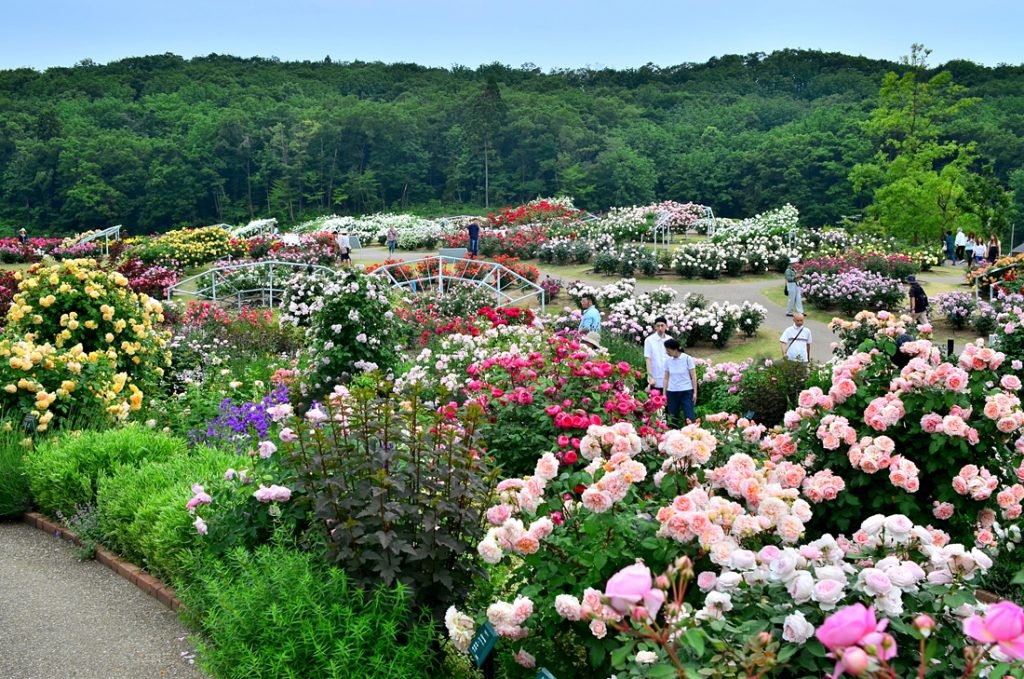
The Nagaoka Fragrant Rose Garden is a garden that focuses not only on the beauty of gorgeous colors and shapes, but also on the intoxicating fragrance of roses.
The garden was opened on May 24, 2003. This rose garden was transferred from the Hokuriku Seisakusho Company (located in Shimogejo, Nagaoka City) after having closed its original rose garden in June 2001. Nagaoka City Office received many requests from those who hoped for the continuation of the roses and the City Office worked for the creation of the garden in Echigo Hillside Park. You can relax and enjoy the rich fragrance of the roses. In the spring of 2023, 20 years after its birth, it was renamed “Nagaoka Fragrant Rose Garden”.
Fragrant Rose Festivals
We adjust the pruning schedule of the repeat-flowering roses to enable us to hold two Fragrant Rose Festivals a year which coincide with the spring and autumn flowering seasons. The festivals include a variety of fun events including craft activities and interesting seminars.
Blooming season
(Spring)End of May ⇔ Late June
(Autumn)Beginning of October ⇔ Beginning of November
Map
It consists of 8 areas: “Fragrance Area,” “Colour Area,” and “Rose Hall of Fame Area” with mainly modern roses; “Area for Wild Roses in Japan” featuring native Japanese roses; “Area for Species and Old Roses,” where ancient roses can be systematically viewed; “Rose and Flower Area” featuring classically styled modern roses; and “The International Fragrant Rose Trial Ground” and the “Award-Winning Rose Area,” which houses a collection of award-winning roses from the trials.
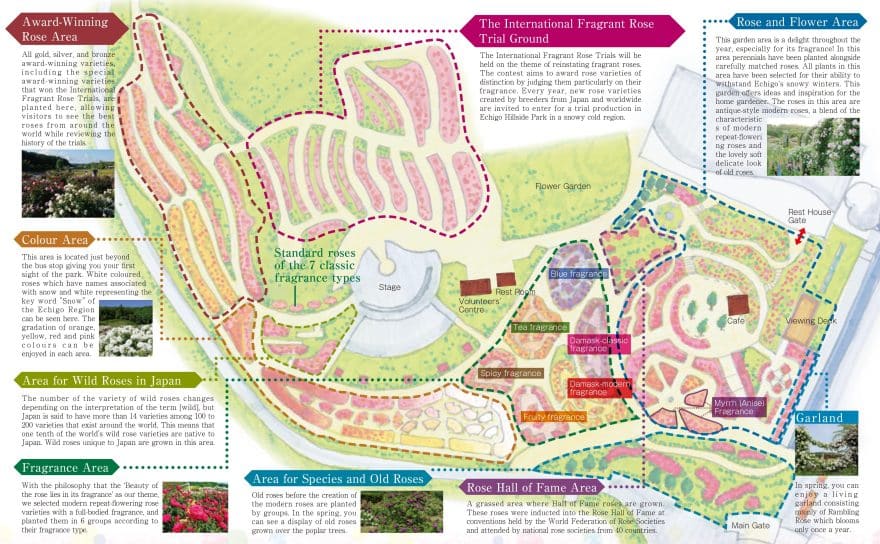
Fragrance Area
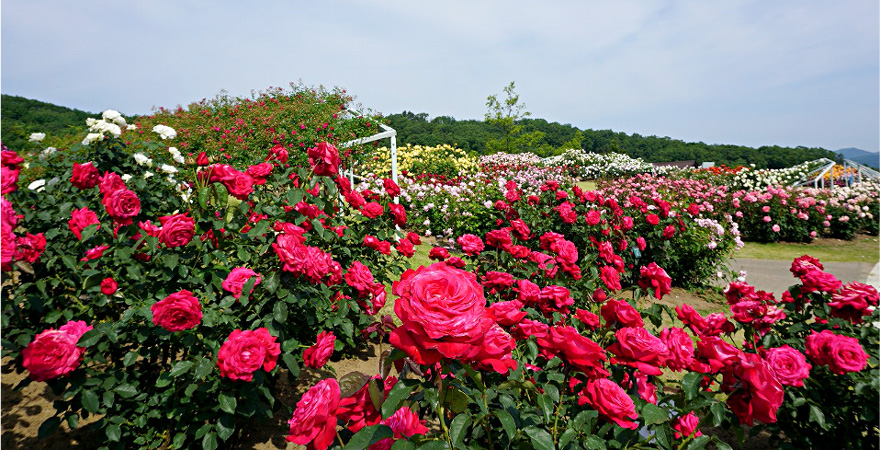
With the philosophy that the ʻBeauty of the rose lies in its fragranceʼ as our theme,we selected modern repeat-flowering rose varieties with a full-bodied fragrance, and planted them in 6 groups according to their fragrance type.
Area for Species and Old Roses
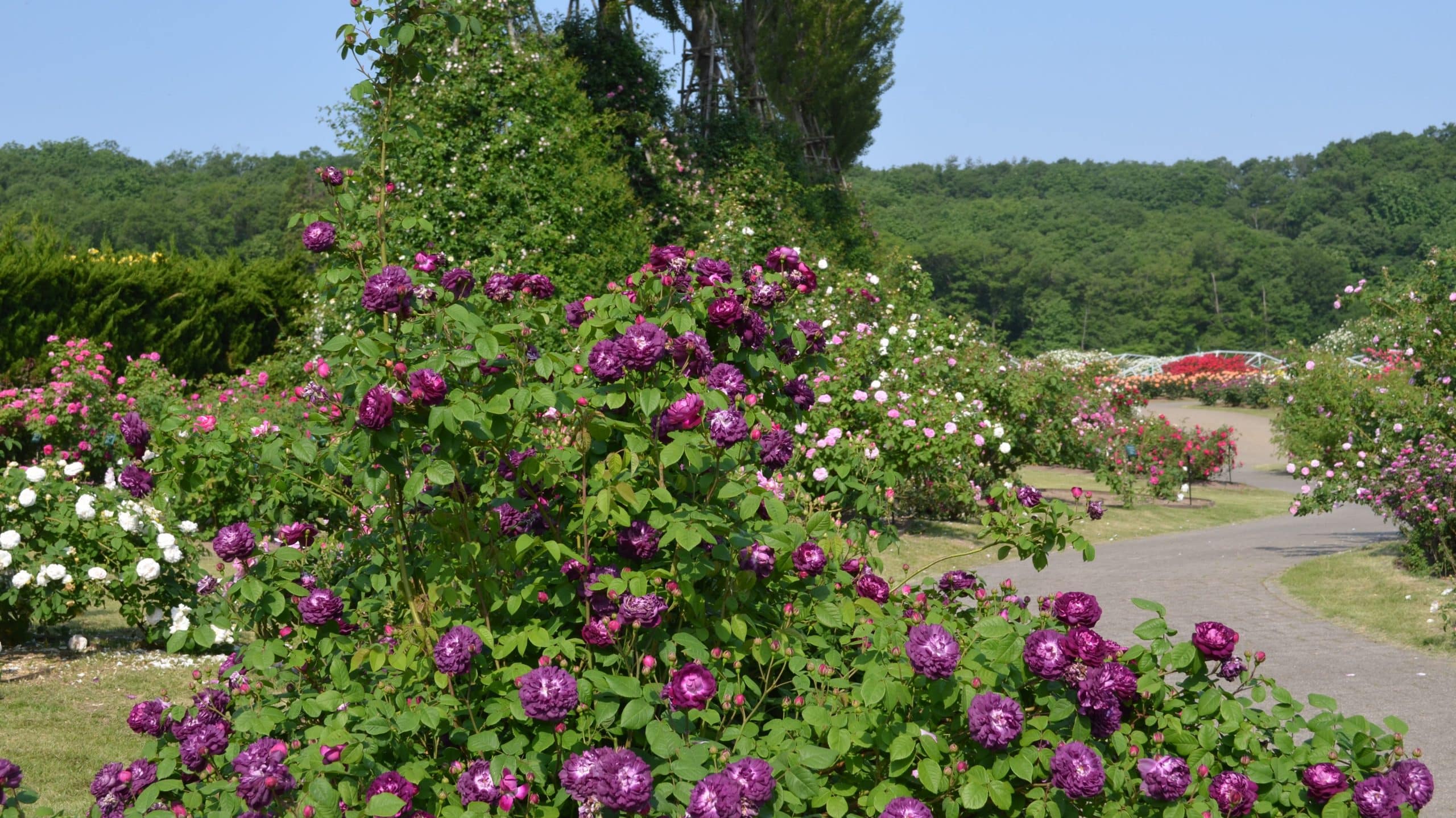
Old roses before the creation of the modern roses are planted by groups. In the spring, you can see a display of old roses grown over the poplar trees.
Rose and Flower Area
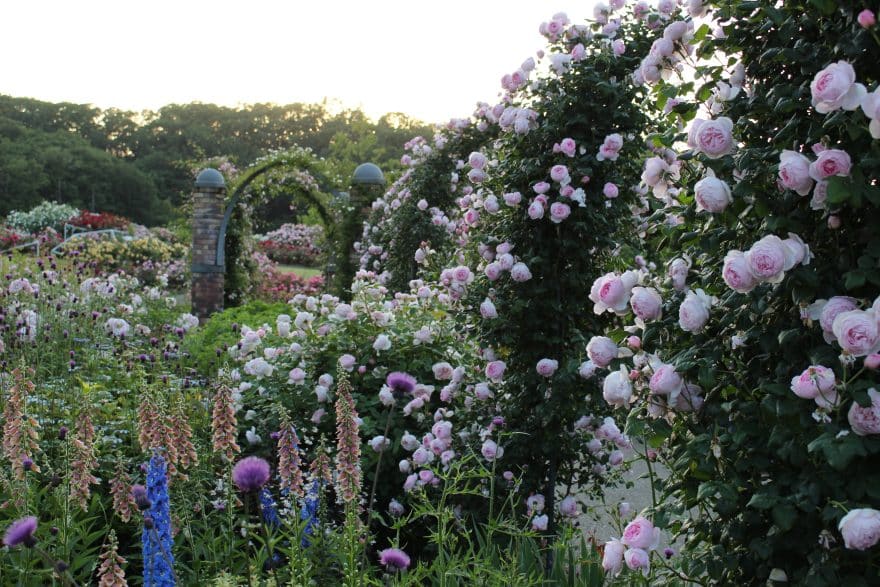
This garden area is a delight throughout the year, especially for its fragrance! In this area perennials have been planted alongside carefully matched roses. All plants in this area have been selected for their ability to withstand Echigoʼs snowy winters. This garden offers ideas and inspiration for the home gardener. The roses in this area are antique-style modern roses, a blend of the characteristic
s of modern repeat-flowering roses and the lovely soft delicate look of old roses.
Rose Hall of Fame Area
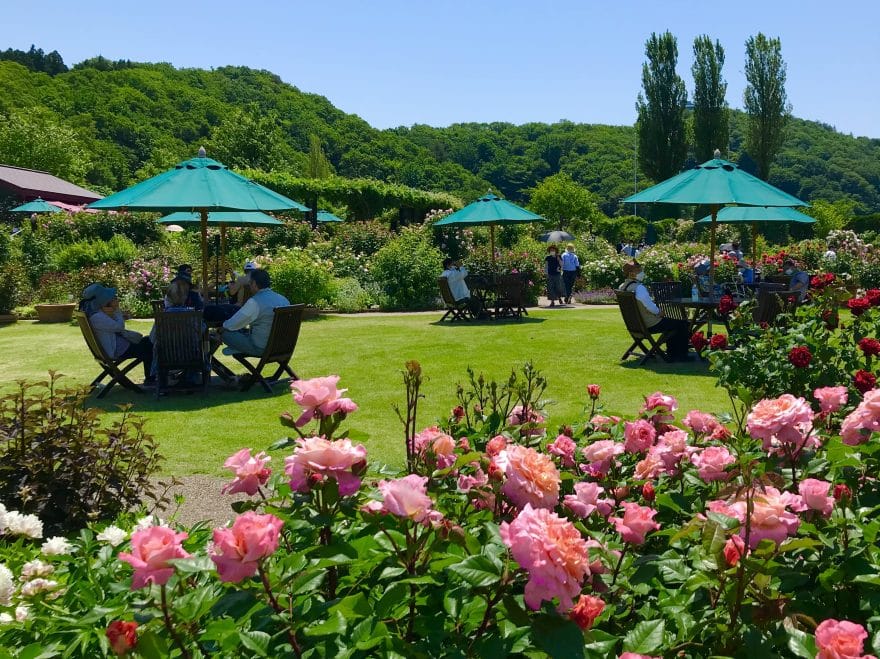
A grassed area where Hall of Fame roses are grown.
These roses were inducted into the Rose Hall of ame at conventions held by the World Federation of Rose Societies and attended by national rose societies from 40 countries.
Colour Area
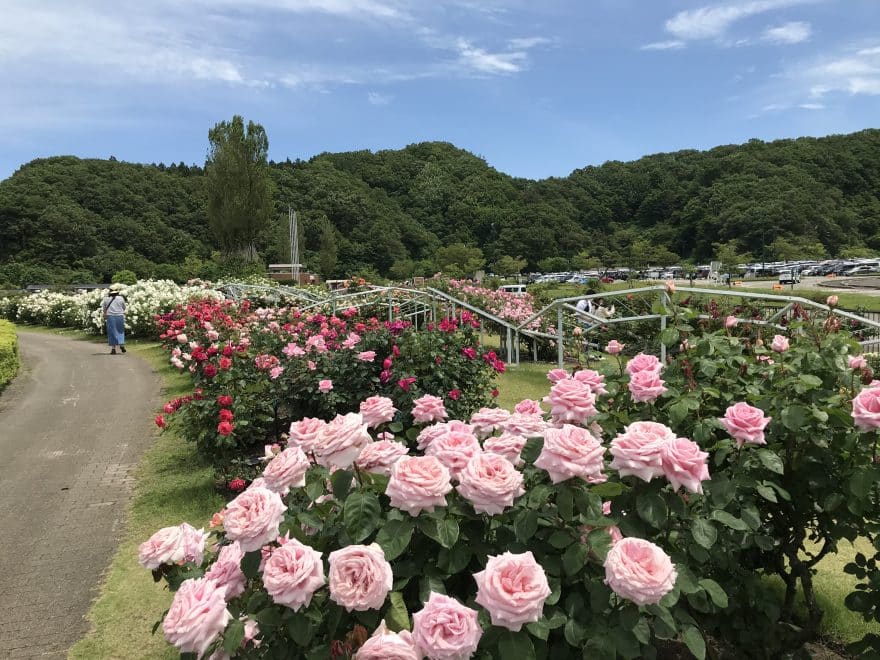
This area is located just beyond the bus stop giving you your first sight of the park. White coloured roses which have names associated with snow and white representing the key word “Snow” of the Echigo Region can be seen here. The gradation of orange, yellow, red and pink colourscan be enjoyed in each area.
Area for Wild Roses in Japan

The number of the variety of wild roses changes depending on the interpretation of the term [wild], but Japan is said to have more than 14 varieties among 100 to 200 varieties that exist around the world. This means that one tenth of the world’s wild rose varieties are native to Japan. Wild roses unique to Japan are grown in this area.
The International Fragrant Rose Trial Ground

The International Fragrant Rose Trials will be held on the theme of reinstating fragrant roses.
The contest aims to award rose varieties of distinction by judging them particularly on their
fragrance. Every year, new rose varieties created by breeders from Japan and worldwide are invited to enter for a trial production in Echigo Hillside Park in a snowy cold region.
Award-Winning Rose Area
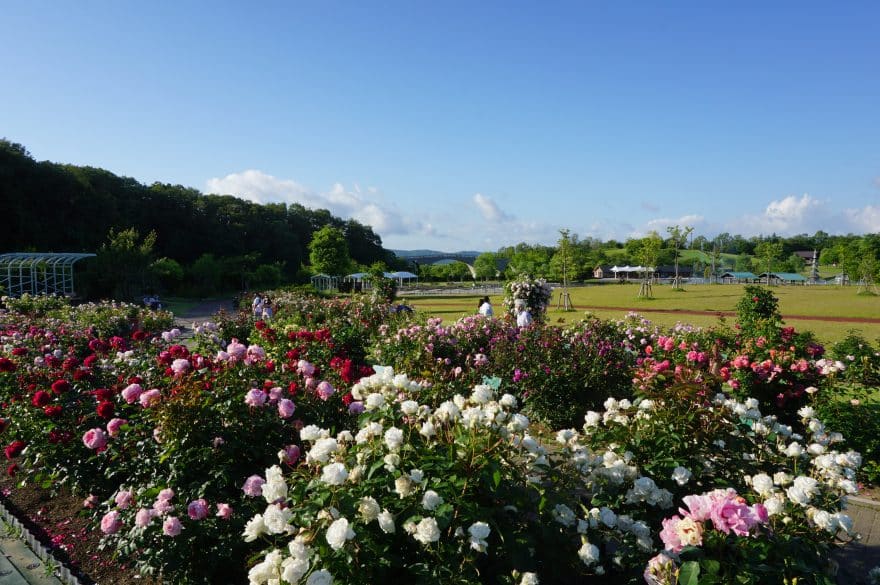
All gold, silver, and bronze award-winning varieties,
i n c l u d i ng the s pec ial award-winning varieties
that won the International Fragrant Rose Trials, are
planted here, allowing visitors to see the best
ro ses fr om a r ound the world while reviewing the
history of the trials.
The Fragrant Rose Garden at Echigo Hillside Park is setting the “standard” with seven distinct fragrance zones
Based on a chemical analysis of the aromatic components, together with a sensory evaluation performed by smelling the scent, rose fragrances can largely be divided into seven different fragrance types. Each area or corner in our Fragrant Rose Garden is therefore arranged according to these fragrance types. By grouping together varieties that typify each of the seven fragrance types, our visitors are able to smell and appreciate each fragrance while gaining an understanding of what the “standard” is for each fragrance type. You can find examples of varieties that are typical of each of the seven fragrances in this guidebook.
How to smell a rose
●old the rose by the stem to smell it. The smell of your han will transfer to the rose if you touch it, so please try not to touch the petals.
●Donʼt sniff the rose, instead gently inhale the scent.Exhale away from the rose. If you breathe on to the rose, the odour of your breath will linger.
●Inhale the scent up to three times and then describe the fragrance. If you smell the rose more than that, your nose will become accustomed to the scent and you wonʼt be able to discern the fragrance.
Damask-Classic Fragrance
A rose fragrance that is well known must be this
classical fragrance. It has a strong, bright and
full-bodied fragrance and lifts the heart. There are
unexpectedly only a few model varieties of modern
roses, and the Tea and fruity fragrances tend to
slightly stand out.
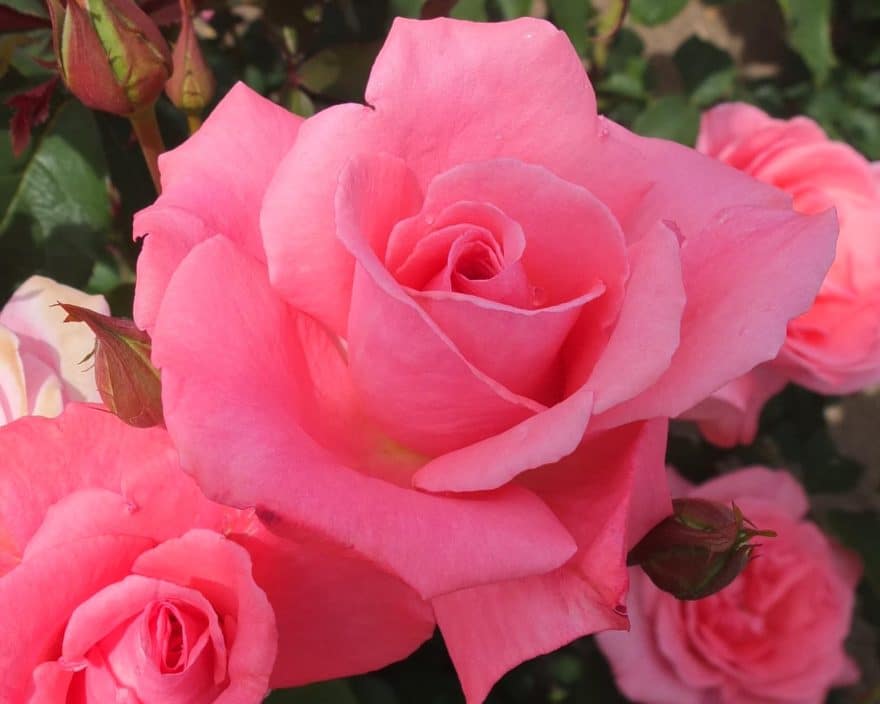
Tea Fragrance
This fragrance contains a special ingredient that is completely different from the fragrance of Damasks. It is only moderately fragrant but is refined and elegant. It is the most common variety of modern rose and although there are some individual difference, Hybrid Tea Roses include an ingredient of this fragrance type.

Fruity Fragrance
This fragrance contains many Damasks and
Damask-strains and exhibits the characteristic of
balancing the Tea ingredients which coexist in the
fragrance. The fragrance creates the image of
fresh fruits such as peach, apricot and apple.
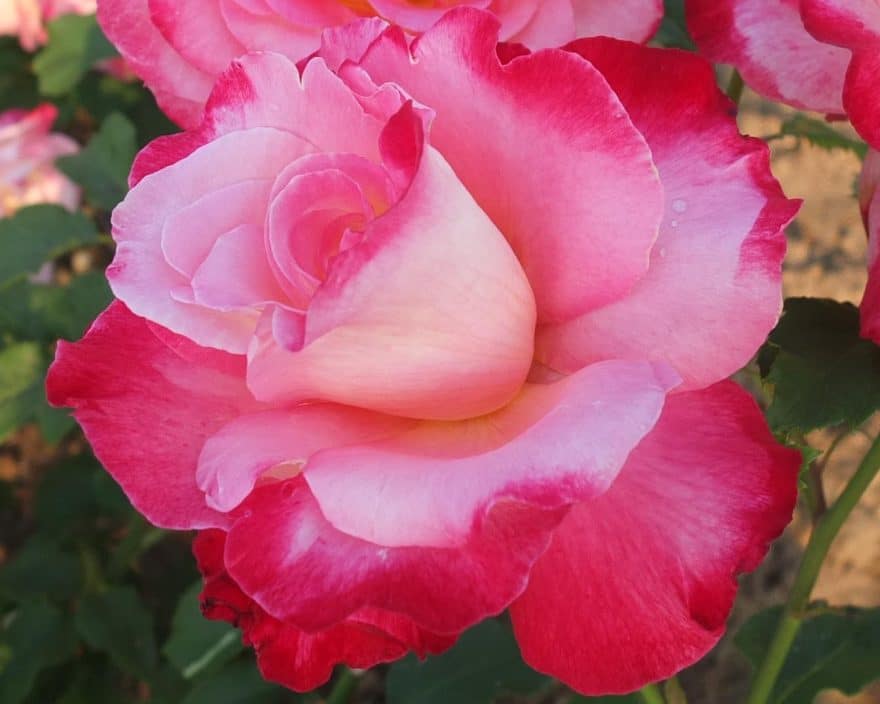
Blue Fragrance
Most blue roses which have blue coloured petals have this type of fragrance. This fragrance consists mainly of the Damask-Modern and Tea ingredients and forms a unique fragrance

Damask-Modern Fragrance
This fragrance is inherited from the Damask-Classic and is characterized by a strong, passionate but refined fragrance. It is believed that the quality of the fragrance differs from the Damask-Classic as its balance of ingredients is dissimilar to the Damask-Classic. Compare and enjoy the various fragrances.
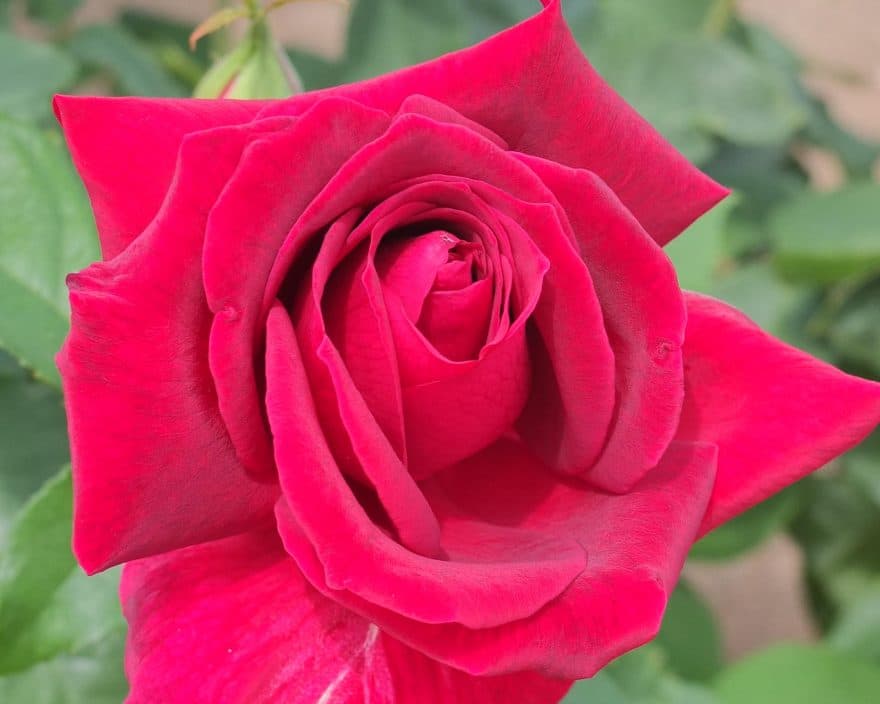
Myrrh (Anise) Fragrance
Myrrh (Anise) fragrance has an herby anise-like scent which incorporates the sweetness of anise along with a stronger grassy green scent. It blends well with tea fragrance and is a common feature of English roses.
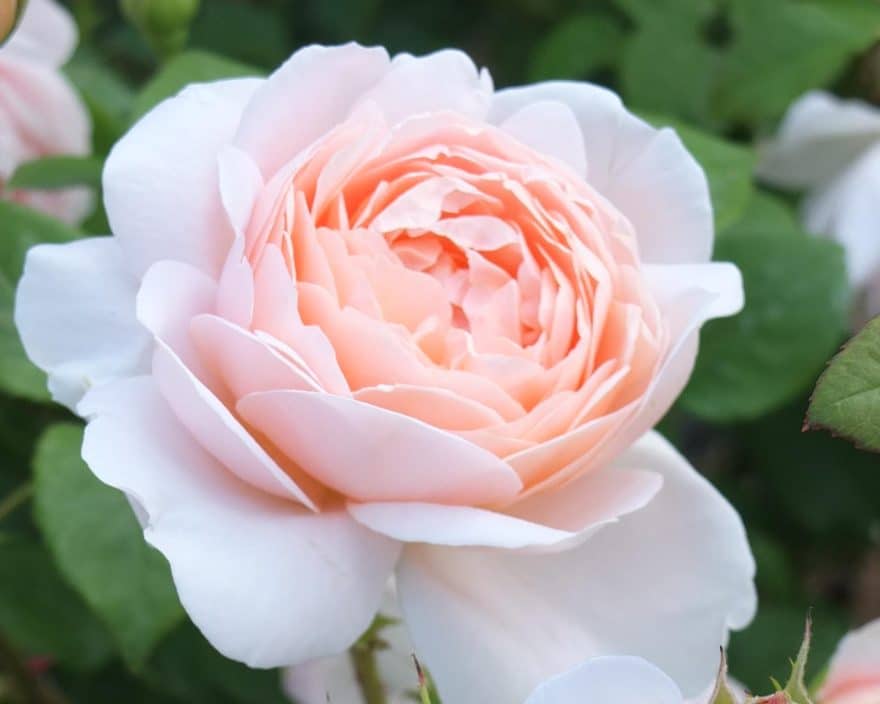
Spicy Fragrance
This fragrance is based on the Damask-Classic. However, it is characterized by slightly strong, spicy fragrances such as clove.

The International Fragrant Rose Trials
Through the process of hybridization the rose fragrance had started to disappear, so we began the International Fragrant Rose Trials in 2005 to encourage appreciation of the beauty of fragrant roses, and to further develop the fragrant rose garden at Echigo Hillside Park.
Outstanding award-winning roses continue to be grown in the park.
We predict that someday soon a world-famous fragrant rose will be discovered at Echigo Hillside Park.
